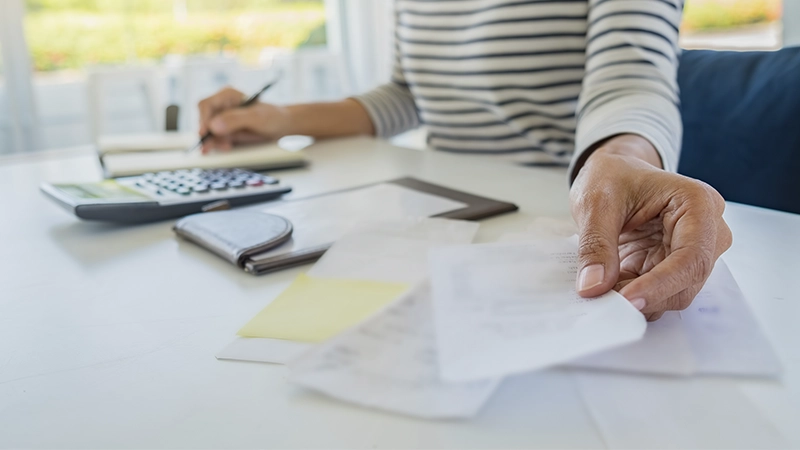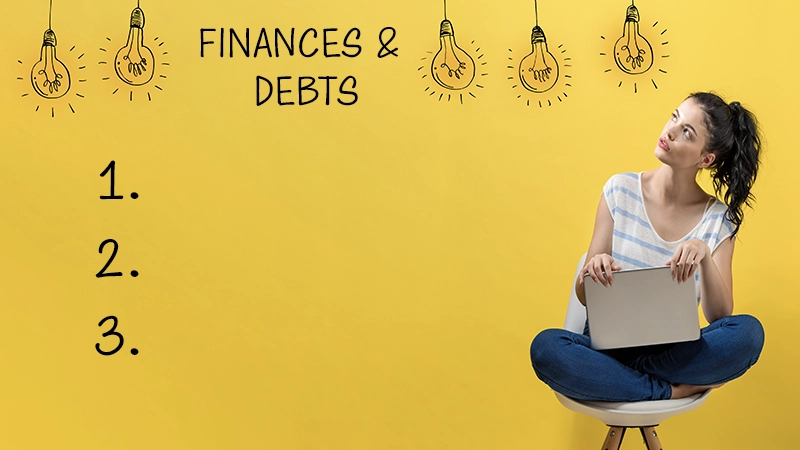How To Pay Off Debt Fast With Low Income: 5 Step Guide
Posted on December 1, 2020 in Debt
During times of economic strife and uncertainty, paying off debt can be challenging for anyone attempting to do so. Read our 5 step guide on how to pay off debt fast with low income, and start building a path towards wealth today.
Table of contents
In 2019 the average median American household income was $64,324, which means half of the population made less money than that per year. What’s more of a growing issue is the average American debt per individual, which is now $90,460. Now obviously each individual will have unique circumstances and numbers as far as income and debt but these numbers paint a clear picture: Americans have much more debt than they can afford to pay off easily.
So this raises the question of how does one pay off debt fast with low income? While financial advisors can help set up a detailed and specific plan, here is a step by step overall guide to help get anyone started.
How to Pay Off Debt on a Low Income
If you have a low income, there are several key strategies that may assist you in getting out of debt. At a high level, to get out of debt quickly on a low income: Take inventory of all finances and debts, develop a monthly budget, look for expenses to reduce or eliminate, when possible, make more than the minimum payment and concentrate on one debt at a time.
Step 1: Take Stock of All Finances and Debts
The very first step to eliminating debt is to know exactly how much is owed and to where. Either using a computer to create a spreadsheet or a simple pen and paper it’s important to list all available details of each debt such as:
- Total Amount Due
- Interest Rate
- Length
- Minimum Monthly Payments
- Amount Paid
- Available Credit Remaining
It’s critical to focus on this step when figuring out how to pay off debt fast with a low income, because late fees and interest payments add up quickly and only serve to push a debt higher and higher.
So in order for this to work, every single debt owed needs to be accounted for and documented with as much detail as possible.
Step 2: Create A Monthly Budget
Making a budget can be stressful and frustrating but it’s one of the only ways to help get out of debt quickly and easily with low income. Similar to writing out debts in the previous step, in this one it’s important to write out how much money is outgoing each month.
Some of the average monthly expenses include things like:
- Rent or Mortgage Payment
- Car Loan
- Phone Bill
- Internet Bill
- Food/Groceries
- Electricity Bill
- Gas
- Minimum Monthly Payments on Debts Like Credit Cards, Loans, etc.
The idea with making a budget is that at the end of the month there is no money left over because every single dollar will be allocated to either bills, debts, or savings.
This is referred to as zero-sum budgeting, and while it can be tough to get started, it can be a huge benefit to eliminating debt fast with a low income.
Once all these various expenses are written down, take the actual overall income brought in under the previous month and work backward from there subtracting all the necessary expenses until there are no more expenses left or no money is left.
It’s important to at least make the minimum monthly payments on each debt so if there is money leftover from the essential expenses then that money can go towards paying a little extra or into savings.
Step 3: Search for Expenses to Reduce or Eliminate

So, now that you know where you stand financially in terms of debts, expenses, and budget, you’ll need to get creative in order to figure out how to pay off debt fast with low income.
Every dollar that is saved in this step is another dollar that can go toward paying off your debts faster. By tackling each individual item on the budget the savings can be pretty considerable and add up fast.
Some things to look into cutting back on:
- Rent or Mortgage Payment: Are there cheaper living situations available? Maybe consider taking on a roommate to help with the rent? Refinancing the mortgage?
- Car Loan: Are there alternatives to owning a car? Are there bus routes that can take you where you need to go? Is bicycling an option? Eliminating a car loan and the various other expenses can save thousands of dollars a year.
- Phone Bill: Can the bill be lowered by eliminating features or getting a different phone plan? Maybe a cheaper deal with another company?
- Internet Bill: Is this deal part of a package with a cable and phone line? Perhaps removing some of the options will decrease the monthly bill. Is there a cheaper alternative elsewhere or even with the same company?
- Food: Buy your food in bulk or on sale. Use coupons any chance you can get and on any item you purchase. Cooking more at home and eating out less can save a lot of money. Switch to cheaper store brands instead of brand name groceries.
- Electricity Bill: Turn off lights when not in the room. Keep the heating and air conditioner off as much as possible. Maybe allocate one night a week to be TV and electricity free?
- Gas: Is it possible to start a carpool program with some coworkers? Is taking the bus, walking, or bicycling an option at least some of the time?
These are just a few options that anyone with these bills can look into, but every individual person is going to have a much different budget than the next so it’s ultimately up to them to decide what can be cut.
Whether that means canceling a subscription service and reading books instead, canceling a gym membership and working out at home, or buying used clothes, furniture, toys and household items instead of brand new — the bottom line is that the more money that is saved in this step means more money that can be used to pay off debts, so it’s very important to take as serious a look into this step as possible.
Step 4: Make More Than Minimum Payments When Possible
Now that every debt has been written out, a budget has been made, and all the expenses reduced to the bare minimum, it’s time to start paying off the debts themselves.
It’s important to at least make the minimum payment on each debt to avoid late fees or other charges, but the only real way to repay debt is to make more than the minimum payment when possible.
Any extra money, such as a tax return or holiday gifts, should be used to repay debt in order to save time and money later on as you work to pay off debt quickly with a low income.
Step 5: Focus on One Debt at a Time

The easiest way to eliminate debt is to tackle each individual one at a time while paying the minimum payment on the others. As in the previous step, all extra money should be going toward whichever debt is the current primary focus. There are two different methods to deciding which debt to focus on — one is called the debt avalanche method while the other is the debt snowball method:
- Debt Avalanche: With this method the borrower would pay down the debt with the highest interest rate first regardless of balance. When this account is closed they move to the second highest interest rate and so on down the list. The idea being that more money is saved in the long run because less interest is accumulating.
- Debt Snowball: This method is when the borrower focuses their payments on the debt with the smallest remaining balance regardless of interest rate. When that account is closed the next smallest and next smallest and so on until all are closed. In the long run this method will be a little more expensive than the debt avalanche method but it goes a long way in the momentum of paying debt as more accounts are closed faster.
Alternative Options for How to Pay Off Debt With Low Income
While the 5-step method listed above can be a good start to paying off debt there are a few more ways to help out with some of those steps, although these options can bring on their own added risks and consequences as well.
- Balance Transfer Card: These are credit cards that generally offer favorable promotional interest rates when opened. They can help pay down high-interest-bearing debts, free of interest during the promotional period. The downside is when the promotional period ends, the interest rate could end up being higher than that of the original debt.
- Debt Consolidation Loans: The idea here is to take out a personal loan large enough to effectively pay off all the other debts and therefore only have one massive debt instead of several smaller debts. If the interest rate is better than the other debts this option can help save money and add convenience by bundling up all the loans into one.
The Bottom Line on How to Get Out of Debt With a Low Income
In order to pay off debt fast with low income, you need to be strategic and intentional in paying off your debts, and dedicate yourself to repayment and financial discipline with the five steps above.
Getting out of debt without professional help can be quite challenging but it’s not impossible. By following these steps and tailoring a personalized plan it’s possible for anyone to get out of debt if they truly focus their time and efforts on it.
Every penny counts so keep that in mind for every purchase. Switching to cash can help reduce spending and help maintain a budget. Perhaps picking up overtime or even another job will also help increase a budget.
Whatever can be done to increase the money going towards paying off your debts will ultimately save you time and stress in the long run and that makes it a valuable move in many ways. Don’t let debt weigh you down over time: see if you should pay off debt or save for retirement first, and get rid of your debt today.
Related blog posts
Need expert financial advice?
Let TurboFinance connect you with the best consulting services and resources to help you take control of your finances and find a path to build wealth.
Get A Free Consultation Today!